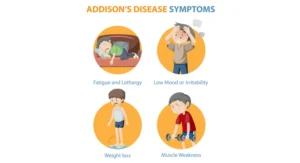Hand Flapping in Autism: Why Does My Child Do This?
By TOI Staff
October 6, 2023
Update on : October 6, 2023

If you’re a parent or caregiver of a child with autism, you may have noticed them engaging in repetitive behaviors, such as hand flapping. This behavior can be puzzling and concerning, but it’s essential to understand that hand flapping is a common feature of autism spectrum disorder (ASD). In this article, we will delve into the reasons behind hand flapping in autism, its significance, and how to manage it effectively.
Understanding Autism Spectrum Disorder (ASD)
Before we explore hand flapping, let’s briefly review what autism spectrum disorder is. ASD is a neurodevelopmental disorder characterized by a range of symptoms, including difficulties with social communication and interaction, repetitive behaviors, and restricted interests. It is a spectrum disorder, which means that it can manifest differently in each individual, with varying degrees of severity.
What is Hand Flapping?
Hand flapping is a repetitive motor behavior commonly observed in individuals with autism. It involves rapidly and repeatedly moving one’s hands, often in a rhythmic or stereotyped manner. Hand flapping can occur in various situations, such as when the individual is excited, anxious, or overstimulated. It may be accompanied by vocalizations or other repetitive movements, like rocking back and forth.
Why Do Children with Autism Hand Flap?
Understanding the reasons behind hand flapping in autism is essential for parents and caregivers. While the exact cause may vary from one individual to another, here are some common explanations:
1. Self-Stimulation
One of the primary reasons for hand flapping in autism is self-stimulation, often referred to as “stimming.” Stimming is a way for individuals with autism to regulate sensory input and manage their emotions. When a child with autism is overwhelmed by sensory stimuli, like bright lights, loud noises, or strong emotions, they may resort to hand flapping as a way to self-soothe and feel more in control of their environment.
2. Expressing Emotions
Hand flapping can also be a means of expressing emotions. For some children with autism, it may be a way to convey excitement, joy, or enthusiasm. Conversely, it can also signal anxiety, frustration, or agitation. Understanding the context in which hand flapping occurs can provide valuable insights into the child’s emotional state.
3. Communication
In some cases, hand flapping may serve as a form of communication. Children with autism may use this repetitive behavior to convey their needs or desires when verbal communication is challenging for them. It’s crucial for caregivers to pay attention to the child’s non-verbal cues and try to interpret what the hand flapping might signify in a specific context.
4. Sensory Sensitivities
Individuals with autism often have heightened sensory sensitivities. Hand flapping may help them cope with sensory overload by redirecting their focus and providing a calming sensory experience. It can serve as a way to filter out overwhelming sensations and create a predictable, rhythmic pattern that the child finds comforting.
When Does Hand Flapping Typically Occur?
Hand flapping can occur in various situations, and its frequency and intensity can vary from person to person. Here are some common scenarios in which hand flapping may be observed:
1. During Excitement
Many children with autism engage in hand flapping when they are excited about something. This can be a way to express their joy and enthusiasm. For example, if they see their favorite toy or are anticipating a fun activity, they may start flapping their hands.
2. In Stressful Situations
Conversely, hand flapping can also occur in response to stress or anxiety. When faced with unfamiliar or overwhelming situations, children with autism may use hand flapping as a coping mechanism to alleviate their anxiety.
3. While Focusing
Some individuals with autism may engage in hand flapping when they are deeply focused on a particular task or interest. This behavior can help them maintain concentration and regulate their sensory input.
4. During Transitions
Transitions can be challenging for children with autism. Hand flapping may occur during transitions between activities, environments, or routines. It can be a way for them to self-soothe and adapt to changes.
Is Hand Flapping Harmful?
Many parents and caregivers wonder if hand flapping is harmful or if it should be discouraged. It’s essential to approach this question with a balanced perspective. Hand flapping, in and of itself, is not inherently harmful. It is a coping mechanism that serves a purpose for individuals with autism.
However, there are situations where hand flapping may need to be managed or redirected, especially if it interferes with a child’s daily functioning or safety. For instance:
1. Social Isolation
Excessive hand flapping in social settings can lead to social isolation. Peers who do not understand the behavior may react negatively, which can be emotionally challenging for the child with autism.
2. Injury Risk
In some cases, hand flapping can pose a risk of injury if the child inadvertently hits or scratches themselves or others. Safety concerns should be addressed by implementing strategies to minimize the risk.
3. Limiting Other Activities
If hand flapping becomes the dominant way of self-stimulation, it may limit the child’s engagement in other activities and interests. Encouraging a diverse range of self-stimulatory behaviors can be beneficial.
How to Manage Hand Flapping
While it’s important to respect the individual’s need for self-stimulation and expression, there are strategies that parents and caregivers can use to manage hand flapping when necessary:
1. Understand Triggers
Identifying the triggers for hand flapping is the first step in managing the behavior. Pay attention to the situations, environments, or emotions that precede hand flapping episodes. This can help you anticipate and respond appropriately.
2. Provide Alternative Sensory Outlets
Offering alternative sensory outlets can redirect the child’s need for self-stimulation. For example, sensory toys, fidget tools, or textured objects can provide sensory input in a less disruptive way.
3. Use Visual Supports
Visual supports, such as visual schedules or social stories, can help children with autism understand and prepare for transitions and new situations. This can reduce anxiety and the need for self-soothing behaviors like hand flapping.
4. Teach Self-Regulation Skills
Teaching self-regulation skills is crucial for individuals with autism. This includes helping them identify their emotions and providing them with coping strategies that are socially acceptable and less disruptive than hand flapping.
5. Seek Professional Guidance
If hand flapping is causing significant distress or interfering with daily life, consider seeking guidance from a healthcare professional or behavioral therapist. They can provide individualized strategies and support.
Conclusion
Hand flapping in autism is a complex behavior with various underlying reasons. It’s essential for parents and caregivers to approach it with understanding and empathy. While hand flapping can serve as a coping mechanism for individuals with autism, there may be situations where it needs to be managed or redirected to ensure the child’s well-being and social inclusion. By identifying triggers, providing alternative sensory outlets, and teaching self-regulation skills, you can support your child in navigating their world more comfortably and confidently. Remember that every child with autism is unique, and what works best for one may not work for another. Tailoring your approach to your child’s specific needs and preferences is key to helping them thrive.
Read more: Hand Flapping in Autism: Why Does My Child Do This?















